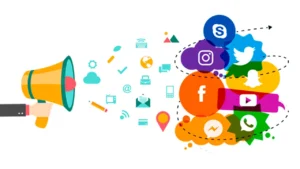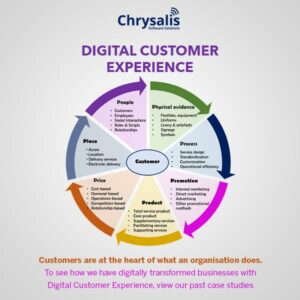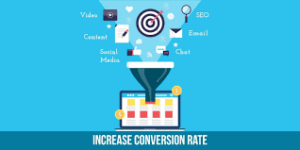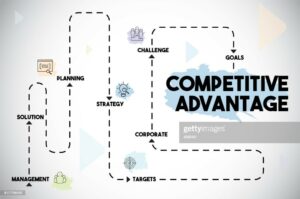Podcasting has become an increasingly popular medium for digital marketing and advertising, offering a unique set of benefits for businesses looking to reach and engage with their target audience. Here are some of the key benefits of using podcasting in digital marketing and advertising:
Increased Reach and Engagement

- Podcasts can reach a large and dedicated audience, with over 800,000 active podcasts and over 28 million episodes available worldwide.
- Podcast listeners are highly engaged, with 80% of listeners reporting that they listen to most or all of each episode.
- Podcasts can reach a large and dedicated audience, with over 800,000 active podcasts and over 28 million episodes available worldwide.
- Podcast listeners are highly engaged, with 80% of listeners reporting that they listen to most or all of each episode.
Targeted Advertising

- Podcasts offer a highly targeted advertising platform, with the ability to reach specific demographics, interests, and behaviors.
- Podcast ads are also highly effective, with 71% of listeners reporting that they have taken action as a result of hearing a podcast ad.
Brand Awareness and Authority

- Podcasting can help establish a brand as an authority in its industry, through the creation of high-quality, informative, and engaging content.
- Podcasts can also help to build brand awareness, through the use of consistent branding and messaging.
Cost-Effective

- Podcasting can be a cost-effective way to reach a large audience, with lower production costs compared to video or television advertising.
- Podcast ads can also be highly targeted, reducing waste and increasing the effectiveness of advertising spend.
Measurable Results

- Podcasting offers a range of measurable metrics, including listenership, engagement, and conversion rates.
- Podcast ads can also be tracked and measured, providing a clear understanding of their effectiveness.
Long-Term Content

- Podcasts can provide long-term content, with episodes remaining available for months or even years after publication.
- Podcasts can also be repurposed into other formats, such as blog posts, videos, or social media content.
Improved Customer Experience

- Podcasting can help improve the customer experience by creating high-quality, informative, and engaging content.
- Podcasts can also help to build trust and loyalty with customers, through the establishment of a consistent and authoritative brand voice.
Increased Conversions

- Podcasting can help to increase conversions, through the use of targeted advertising and calls-to-action.
- Podcasts can also help to build trust and
- credibility with customers, increasing the likelihood of conversion.
Competitive Advantage

- Podcasting can provide a competitive advantage, through the creation of unique and high-quality content.
- Podcasts can also help to establish a brand as a thought leader in its industry, increasing its competitiveness.
Flexibility and Versatility

- Podcasting offers a range of formats and styles, from interview-style podcasts to narrative podcasts and m
ore.
- Podcasts can also be used in various contexts, from marketing and advertising to education and training.
Podcasting offers various benefits for digital marketing and advertising, from increased reach and engagement to targeted advertising and measurable results. By incorporating podcasting into their marketing strategy, businesses can establish themselves as authorities in their industry, build trust and loyalty with customers, and drive conversions and sales.
Great for Niche Audiences
If your business serves a specific group of people or a niche market, podcasting is a perfect way to reach them. You can focus your episodes on topics that are highly relevant to your audience. For example, if you run a fashion business, you could create podcasts about the latest fashion trends, style tips, or interviews with designers. By focusing on what your audience cares about, you can attract loyal listeners.
.
Sent by Copilot:
Podcasting has become a powerful tool in digital marketing and advertising. It offers a unique way to reach audiences and build brand loyalty. Podcasts are digital audio programs available on-demand. They can be accessed on various platforms like Spotify and Apple Podcasts. This format allows businesses to engage with listeners in a personal and direct manner.
One of the main advantages of podcasting is its growing popularity. In the United States, over 41% of the population listens to podcasts at least once a month1. This trend is not limited to the US; it is global. The number of podcast listeners is increasing every year. This growth provides a valuable opportunity for businesses to reach a wider audience.
Podcasts offer a variety of content formats. These include interviews, storytelling, and educational segments. This flexibility allows businesses to experiment with different types of content. They can find what resonates most with their audience. For example, a company can use podcasts to share industry insights, interview experts, or tell stories about their brand.
Podcast marketing involves several strategies. One effective strategy is to collaborate with other podcasters. This can help businesses reach new audiences. Another strategy is to promote podcasts on social media. This can increase visibility and attract more listeners. Businesses can also use email marketing to inform their subscribers about new podcast episodes.
Case studies show the effectiveness of podcast marketing. For instance, the company Mailchimp used podcasting to enhance its brand image. Mailchimp launched a podcast series called “The Jump” which featured interviews with musicians. This podcast helped Mailchimp connect with a creative audience and build brand loyalty2.
Another example is the podcast “The Message” by General Electric. This podcast was a science fiction series that subtly promoted GE’s technology. It became very popular and helped GE reach a new audience. The success of “The Message” showed how podcasts can be used to create engaging content that promotes a brand without traditional advertising3.
Podcast advertising is another important aspect. It involves placing ads within podcast episodes. These ads can be pre-recorded or read by the podcast host. Host-read ads are particularly effective because they feel more personal and trustworthy. According to studies, 82% of listeners take action after hearing a podcast ad2. This high engagement rate makes podcast advertising a valuable tool for businesses.
Metrics are crucial in podcast marketing. Businesses need to track downloads, listener retention, and conversion rates. These metrics help in understanding the effectiveness of the podcast. They also provide insights into what content works best. By analyzing these metrics, businesses can refine their podcasting strategies.
In conclusion, podcasting offers a unique and effective way to engage with audiences. Its growing popularity and flexibility make it a valuable tool in digital marketing and advertising. Businesses can use podcasts to share valuable content, build brand loyalty, and reach new audiences. Case studies like Mailchimp and General Electric show the potential of podcasting in enhancing brand image and connecting with listeners. With the right strategies and metrics, podcasting can be a powerful addition to any digital marketing plan
Getting Started with Podcasting
If you’re interested in getting started with podcasting, here are some steps to follow:
- Define your target audience: Identify your target audience and create content that resonates with them.
- Choose a format: Choose a format for your podcast, such as an interview-style podcast or a narrative podcast.
- Plan your content: Plan your content in advance, including topics, guests, and scripts.
- Invest in equipment: Invest in high-quality equipment, including a microphone, headphones, and recording software.
- Record and edit: Record and edit your podcast, using software such as Audacity or Adobe Audition.
- Publish and promote: Publish and promote your podcast, using platforms such as Apple Podcasts, Spotify, and Google Podcasts.











